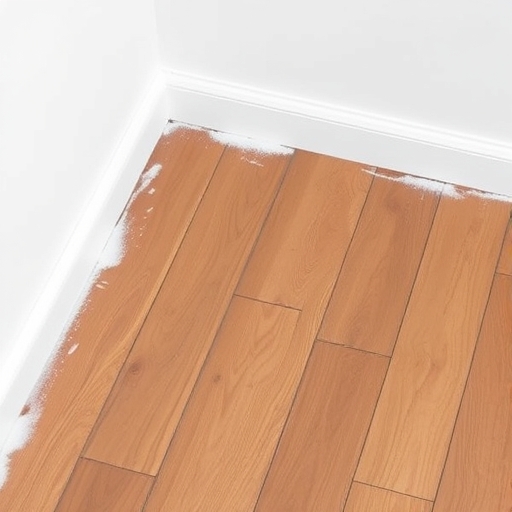How to Get Paint Off Wood Floor: A Comprehensive Guide
Removing paint from wood floors can be a daunting task, especially if you’re dealing with stubborn stains or a large area. Whether you’ve had a DIY mishap or are restoring an old floor, this guide will walk you through effective methods to safely and efficiently remove paint while preserving the integrity of your wood flooring.
Understanding the Types of Paint
Before diving into the removal methods, it’s essential to understand the type of paint you’re dealing with. Different paints require different removal techniques.
Types of Paint
1. Latex Paint: Water-based and easier to remove. Typically used for interior walls.
2. Oil-Based Paint: More challenging to remove due to its adhesive properties. Often used for trim and furniture.
3. Spray Paint: Can be particularly tricky due to its fine mist, which can cover large areas.
Safety Precautions
Before starting the paint removal process, ensure you take the necessary safety precautions:
- Ventilation: Open windows and doors to ensure proper airflow.
- Protective Gear: Wear gloves, goggles, and a mask to protect yourself from fumes and debris.
- Test Area: Always test your chosen method on a small, inconspicuous area first.
- Putty knife or paint scraper
- Soft cloth
- Mineral spirits (for oil-based paint)
- Heat gun
- Putty knife
- Protective gloves
- Chemical paint stripper
- Paintbrush
- Putty knife
- Gloves and goggles
- White vinegar
- Water
- Soft cloth
- Scrub brush
- Sandpaper (80-220 grit)
- Orbital sander (optional)
- Vacuum cleaner
- Work in Sections: Focus on small areas to avoid overwhelming yourself.
- Be Patient: Some methods may take time, so don’t rush the process.
- Protect Surrounding Areas: Use painter’s tape to protect baseboards and other nearby surfaces.
- Follow Up: After removing paint, consider refinishing or resealing the wood to restore its original look.
Methods for Removing Paint from Wood Floors
1. Scraping
Best For: Dried latex paint or small areas of paint.
Tools Needed:
Steps:
1. Loosen the Paint: Gently scrape the surface of the paint with the putty knife. Be careful not to gouge the wood.
2. Wipe Clean: After scraping, use a soft cloth to wipe away any residual paint dust.
3. Repeat: Continue until the paint is removed.
2. Heat Gun
Best For: Thick layers of paint, especially oil-based.
Tools Needed:
Steps:
1. Set the Heat Gun: Adjust the heat setting on the gun to the low or medium setting.
2. Apply Heat: Hold the heat gun a few inches above the paint and move it back and forth until the paint begins to bubble.
3. Scrape Off Paint: Once the paint is soft, use a putty knife to scrape it off gently.
3. Chemical Strippers
Best For: Heavy-duty removal, especially for oil-based paints.
Tools Needed:
Steps:
1. Apply Stripper: Use a paintbrush to apply a generous layer of chemical stripper to the paint.
2. Wait: Allow the stripper to sit for the recommended time (usually 15-30 minutes).
3. Scrape Off Paint: Use a putty knife to scrape away the softened paint.
4. Clean Up: Wipe the area with a damp cloth to remove any residual stripper.
4. Vinegar and Water Solution
Best For: Latex paint and eco-friendly options.
Tools Needed:
Steps:
1. Mix Solution: Combine equal parts vinegar and water in a spray bottle.
2. Spray Area: Lightly spray the affected area.
3. Let Soak: Allow the solution to sit for a few minutes to soften the paint.
4. Scrub: Use a soft cloth or scrub brush to gently scrub the paint off.
5. Sanding
Best For: Stubborn paint that won’t budge.
Tools Needed:
Steps:
1. Choose Sandpaper: Start with a coarse grit (80) and progress to finer grits (220).
2. Sand the Area: Sand the paint off carefully, following the grain of the wood.
3. Clean Up: Vacuum the area to remove dust and debris.
Comparison Table of Paint Removal Methods
| Method | Best For | Pros | Cons |
|---|---|---|---|
| Scraping | Dried latex paint | Simple, no chemicals needed | Labor-intensive, may damage wood |
| Heat Gun | Thick layers of paint | Effective for tough spots | Risk of burning wood |
| Chemical Strippers | Heavy-duty removal | Fast and thorough | Fumes, requires safety precautions |
| Vinegar Solution | Latex paint | Eco-friendly | Time-consuming, may require multiple applications |
| Sanding | Stubborn paint | Effective for final cleanup | Can damage wood if not careful |
Tips for Successful Paint Removal
Frequently Asked Questions (FAQ)
Q1: Can I use a pressure washer to remove paint from wood floors?
A: No, using a pressure washer is not recommended for wood floors as it can cause damage and splintering.
Q2: Will removing paint damage my wood floor?
A: If done carefully, most methods should not damage the wood. Always test on a small area first.
Q3: How do I know if the paint is latex or oil-based?
A: You can test a small area with rubbing alcohol. If the paint softens, it’s likely latex; if not, it may be oil-based.
Q4: What if the paint has penetrated the wood grain?
A: For deeply embedded paint, sanding may be necessary to remove all traces. Just be sure to refinish the area afterward.
Q5: Can I use a steam cleaner for paint removal?
A: Steam cleaners can help soften paint but are not as effective as other methods. Use with caution to avoid damaging the wood.
Conclusion
Removing paint from wood floors doesn’t have to be an overwhelming task. With the right tools and techniques, you can restore your floors to their original beauty. Whether you opt for scraping, heat, chemical strippers, or natural solutions, remember to prioritize safety and take your time. With patience and persistence, you’ll achieve the results you want. Happy restoring!

